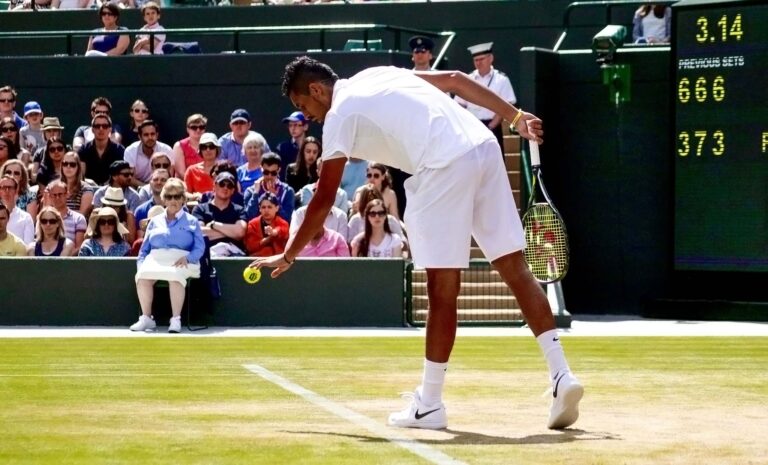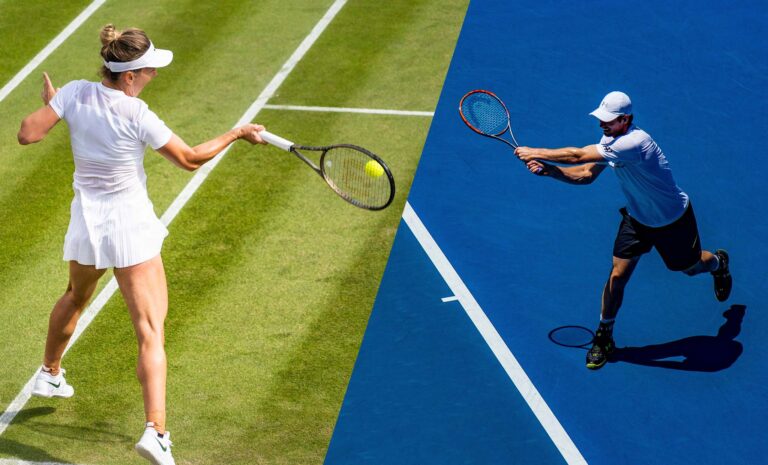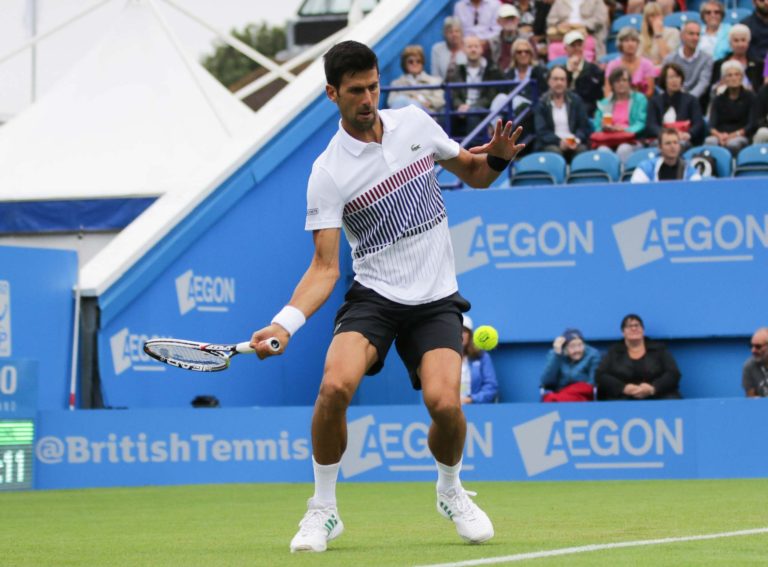Since Bjorn Borg started the topspin revolution in the 1970s, the Eastern forehand grip has become one of the most popular grips on tour. It’s a relatively conservative grip by today’s standards, but is a grip that offers a lot more access to topspin than the traditional continental grip.
It was particularly popular during the 80s and 90s because of the prevalence of indoor carpet courts and is still a fantastic grip choice for aggressive all-court players.
How To Hold An Eastern Forehand Grip
This is a grip that will feel very comfortable and natural to most players, specially beginners who are picking up a racket for the first time. For that very reason, most tennis coaches teach the Eastern forehand grip as a starting point before progressing onto other grips.
If you look at the racket butt cap, you’ll see that the grip forms an octagonal shape with eight sides or “bevels”. To find the Eastern grip, simply place the palm-side knuckle of your index finger on the third bevel (or on the seventh bevel if you’re left handed).
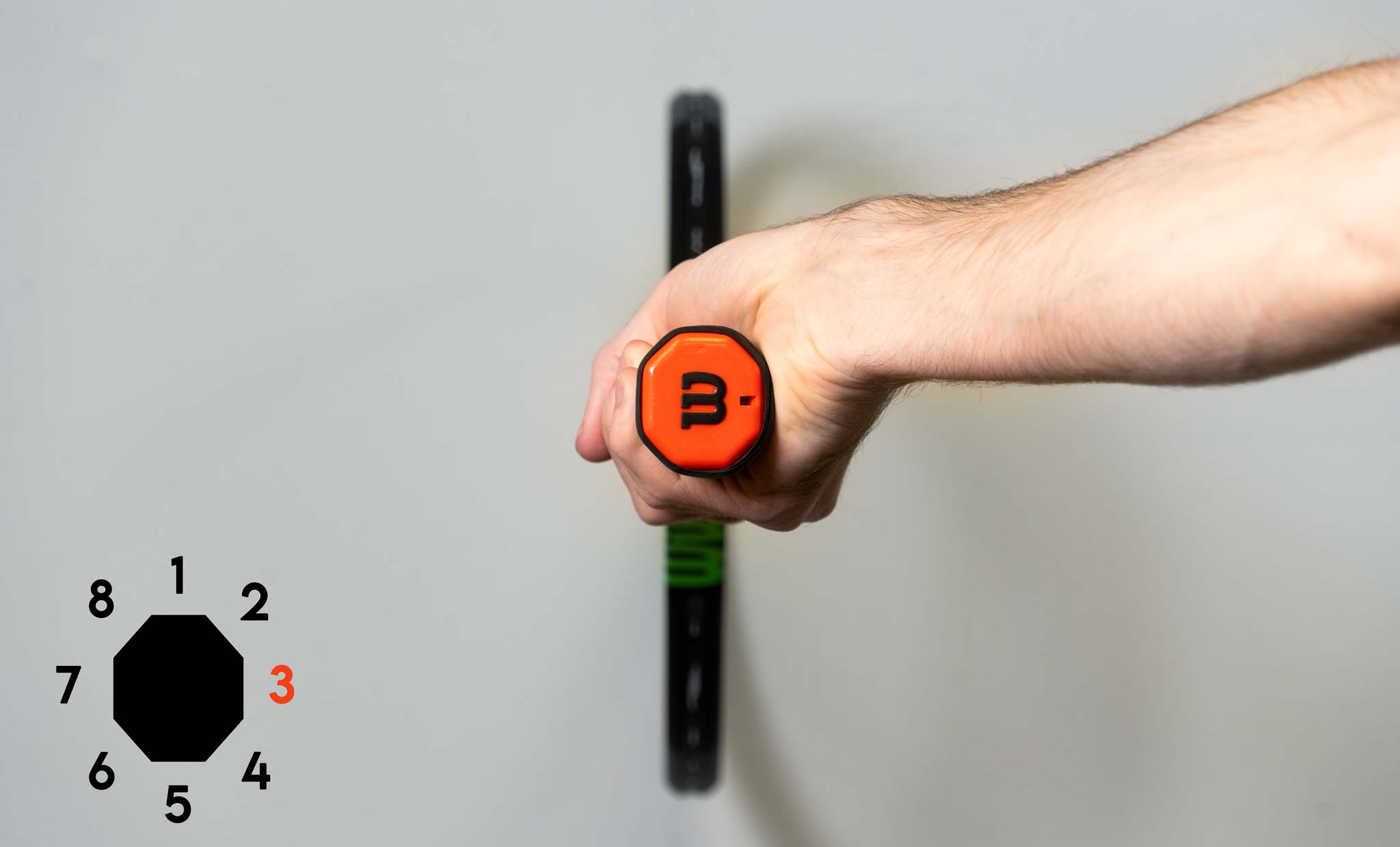
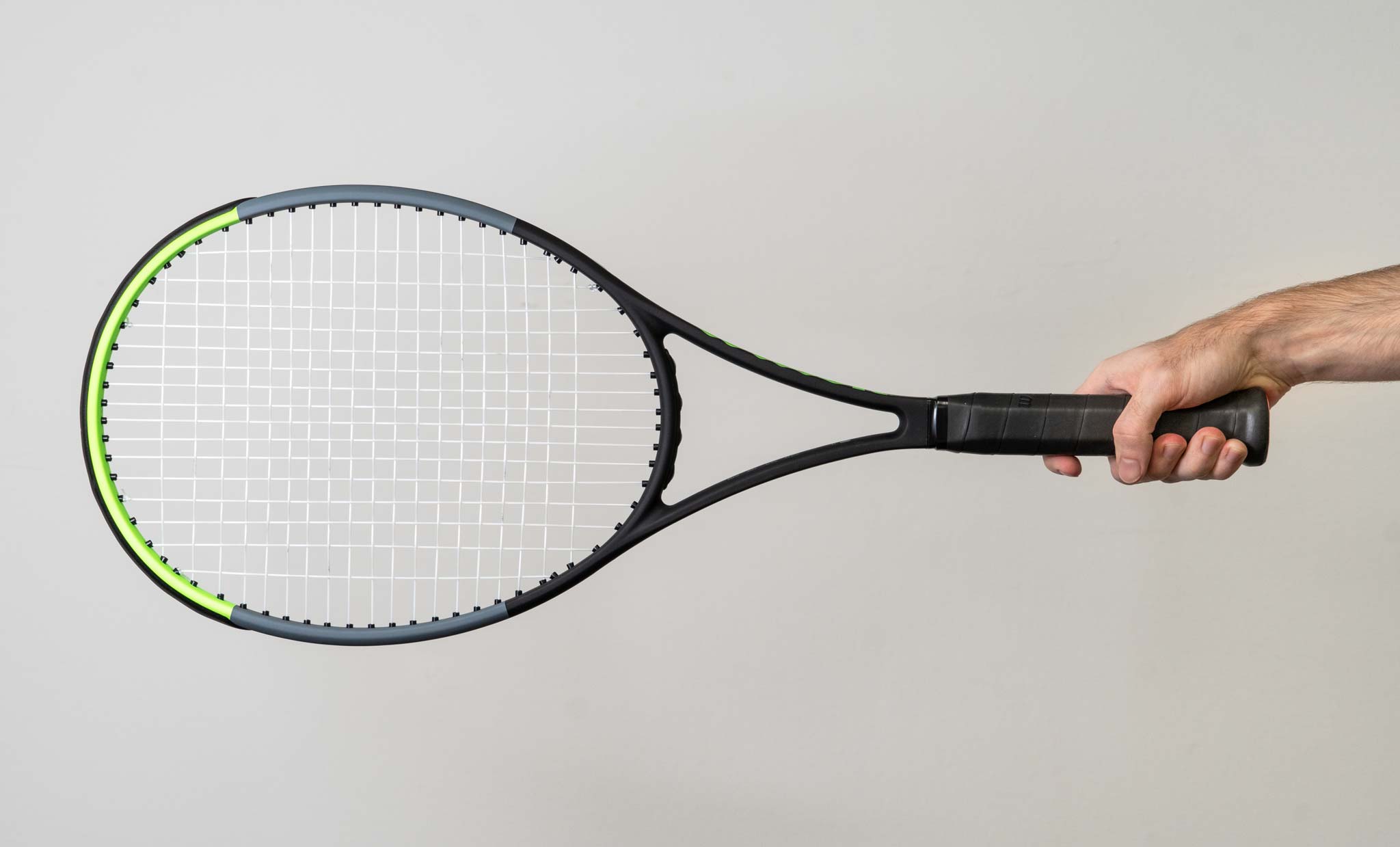

Advantages of an Eastern Grip
There are a number of significant benefits to using an Eastern forehand grip.
For starters, the biggest advantage is the ability to hit flatter shots. Thanks to the open face at contact, hitting flatter and more aggressive groundstrokes almost comes naturally.
It’s great for hitting approach shots and transitioning to the net and makes it a fantastic grip choice for all-court players looking to be more aggressive from the baseline and work their way forward. What’s more, the proximity of the Eastern grip to the Continental grip makes it ever so slightly easier/quicker to switch between the two grips, which can be important when getting to the net. That being said, switching grips when using the semi-western grip or full-western grip is not exactly complicated and the difference is fairly insignificant.
It’s also a grip that lends itself well to dealing with low bouncing balls thanks to the open racket face when hitting the ball. That’s was a huge bonus on indoor carpet courts which were so popular during the 80s and 90s and is still important on grass courts.
Disadvantages of an Eastern Grip
While the Eastern grip is favourable in many circumstances, there are a few downsides to having such and open grip.
The main drawback is the difficulty in generating large amounts of topspin. The slightly more open racket face at contact means producing spin is a little more difficult than it is with the semi-western or full western grip, which naturally lend themselves more to topspin groundstrokes.
Less spin also means less net clearance. More extreme grips lead to more loopy shots which rise higher above the net and drop quicker, while more conservative grips like the Eastern grip lead to much flatter shots. That means less net clearance, which can increase the chances of missing long or in the net.
It can also be slightly more difficult to hit high bouncing balls with, again because of the open racket face at contact, which means playing on clay courts can be a little more challenging.
Of course, that doesn’t mean this grip is harder to play with , but there is no doubt that the it favours flatter hitting players that are likely to be more aggressive and work their way to the net.
Which Players Use an Eastern Forehand Grip?
The Eastern grip has been around for decades and has been used by some of the best tennis players in the game on their way to success.
The likes of Bjorn Borg, Chris Evert, Steffi Graf and Pete Sampras stand out pre 2000s. More recently, some of the bigger names include Roger Federer, Juan Martin del Potro, Grigor Dimitrov and Stefanos Tsitsipas on the men’s tour and Ashleigh Barty, Angelique Kerber and Petra Kvitova on the women’s tour.
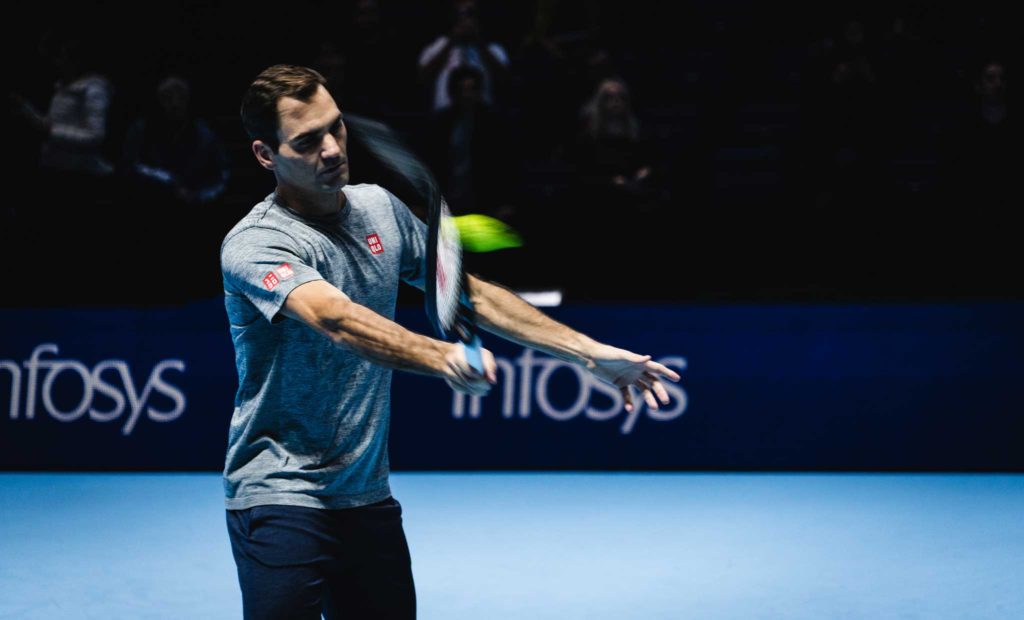

Should I Use an Eastern Forehand Grip?
Your grip choice depends very much on your style of tennis. That being said, the Eastern forehand grip is a fantastic grip for just about any player. It’s a grip that feels very natural to most players, which is the main reason it’s the go to grip for coaches when teaching entry level players how to hit a forehand. But it’s also a grip that suits the higher end of the game perfectly too. It has its advantages and drawbacks, but it’s perfect for an all rounder who likes to play all court tennis.
In our opinion, the Eastern forehand grip is the best place to start if you’re starting from scratch or are considering switching your grip. You can always begin with an Eastern grip and just push closer and closer to a semi-western grip until you feel you’ve found the right grip for your game.
Featured Image: Grigor Dimitrov – David Iliff / Wikimedia Commons
Photo Credit: Angelique Kerber – Peter Menzel / Flickr

